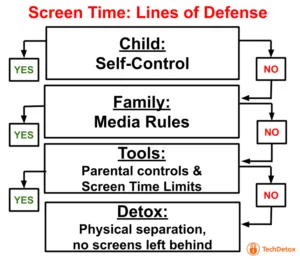
Screen Time Management Plan for Your Family
Screen Time Management – where to start?
The best screen time management tool is self-control. Good news – it’s free. Bad news – it does not work.
Children are not mature enough to control their own screen time. To expect them to resist a multibillion dollar industry that intentionally designs tech addiction is unrealistic – and unfair to the kids. Parents need to step in to protect them from addictive technology.
We have put together a step-by-step plan.
1. Set Up Family Media Rules
Agree on the rules of engagement – what screen time rules would work for your family. Involve the kids and get their buy-in: once the screen time boundaries are in place and everyone agreed, there is no need for daily exhausting negotiations.
Screen time rules at a minimum include:
- Screen-free zones
- Screen-free times
- Responsible online behavior (write it down in a family media contract)
American Academy of Pediatrics Family Media Rules screen time calculator is a helpful tool to craft a realistic screen time plan everyone is happy about:
When your children complain about screen time limits, talk to them about the dangers of screen time overuse and online safety.
Be as annoying as it takes for the message to sink in. They need to hear how serious you are about protecting them. Here is our list of books about screen time management and helpful digital literacy resources.
For daily screen time parenting and consequences for rule-breaking, check out Screen Time Parenting Strategies.
2. Protect Your Family WiFi
The next step in screen time plan is to protect your family WiFi. A router is a digital gateway into your home – see our overview of routers with parental controls.
On any router, it is possible to filter out inappropriate content for free by changing DNS settings.
3. Configure Parental Controls
Take advantage of free built-in parental controls for both screen time limits and content filtering:
- Set Operating Systems parental controls: see our guides for Apple Screen Time, Google FamilyLink, Amazon FreeTime, and Microsoft Family
- Set parental controls on the Devices – phones, chromebooks, tablets, smart gadgets of every kind. Even gaming consoles have parental controls.
- Take an inventory of all Internet-enabled devices in your home, and configure parental controls for each of them. If you put screen time limits on the phone but forgot to do the same for a laptop, you have not solved the problem. Don’t forget Internet of Things smart gadgets.
- Set parental controls on the Apps your kids use, most of them either have parental controls already, or will be forced to develop them under parents’ pressure. Protect Young Eyes website has detailed guides for most popular apps.
- Layer parental controls. In addition to built-in options, there are a number of third party subscription-based screen time management apps. Cell phone carriers offer parental controls for data plans.
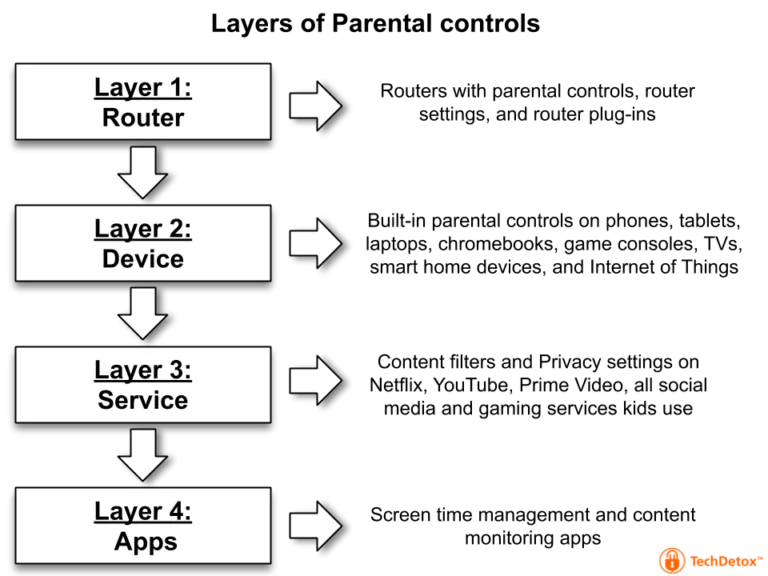
4. Monitor Activity
Once you put media rules and parental controls in place, your job is not done – you need to monitor what your kids are doing online:
- Know all the apps they use
- Demand to know their passwords
- Perform spot checks on their online activity
Screen time is a privilege conditional on responsible behavior. When kids mess up online, their safety and their future are in danger. Our job as parents is to prevent that from happening.
To make the task of auditing less time-consuming, online safety monitoring apps can locate potential problems and alert the parent. I use Bark that sends me screenshots of problematic content my kids encounter – with suggestions of how to talk about it:
5. Take Devices Away
Parental controls protect children, but don’t relax just yet – kids can and do hack them. They are better with technology than us, and tech industry works hard to keep them addicted – and motivated to bypass parental controls.
How motivated? Here is an actual sample of Internet search queries that land on our website:
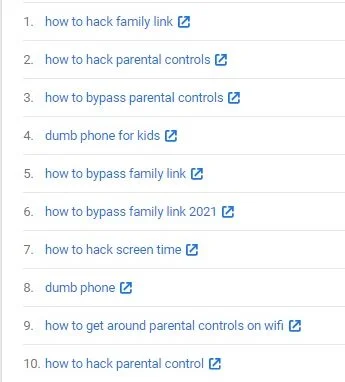
The moral of the story: even with the best digital solutions in place, nothing works better than physical separation of child from the device:
When there is no screen in their hands, there is nothing to hack.
In our home, everything that is not password-protected, is physically locked up.

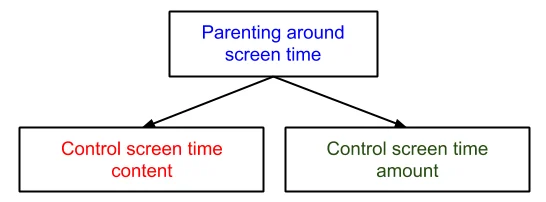


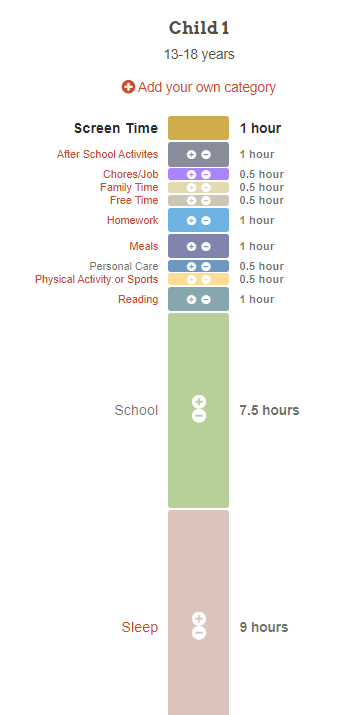


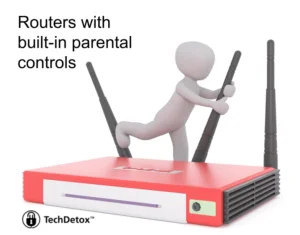



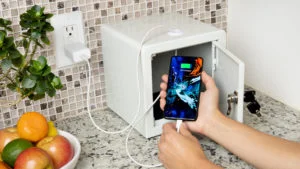
i am in desperate need of screen limiting, please contact me